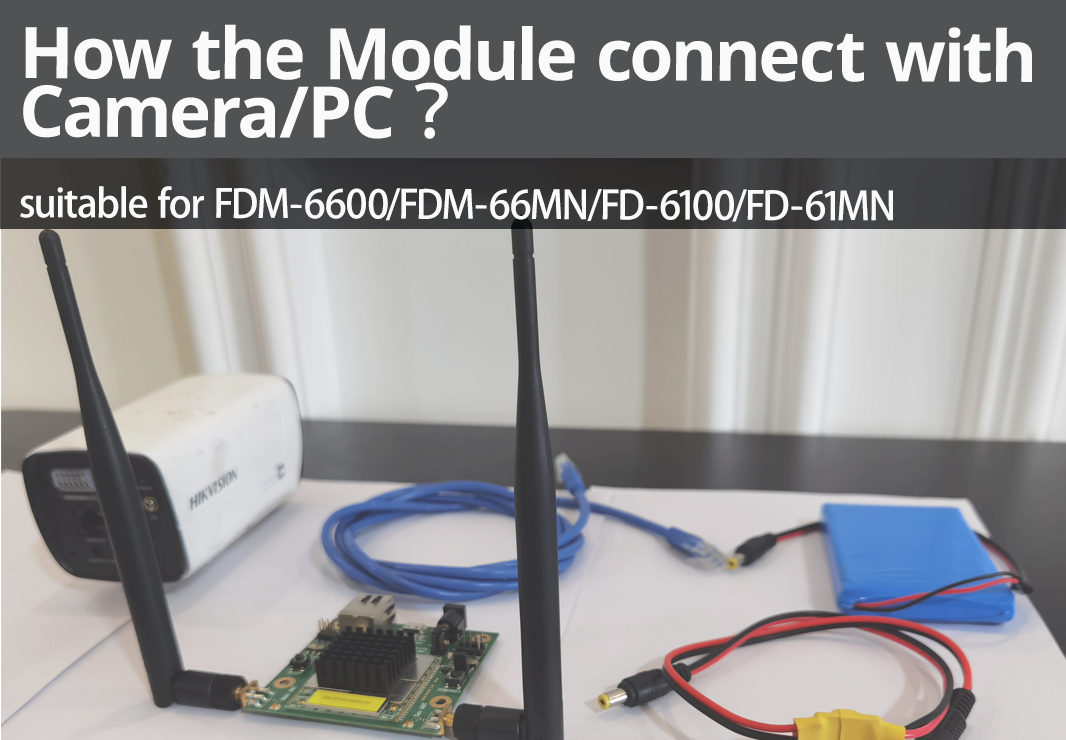In this blog, we help you quickly choose the right module for your application by introducing how our products are classified. We mainly introduce how IWAVE'S modules are classified. We currently have five module products on the market, which are categorized as follows:
In terms of application, our module is suitable for two applications, one is the line-of-sight application, and the other is the non-line-of-sight distance application.
About the line-of-sight application, which is mainly used in UAVs, air-to-ground, and supports up to 20km. It is widely used in film shooting, drone patrol, mapping, marine research and animal protection, etc.
About non-line-of-sight, the ground is facing the ground, mainly used in robots, unmanned vehicles, supporting a maximum distance of up to 3km, with very strong penetration ability. It is widely used in smart cities, wireless video transmission, mine operations, temporary meetings, environmental monitoring, public security firefighting, anti-terrorism, emergency rescue, individual soldier networking, vehicle networking, unmanned vehicles, unmanned ships, etc.
According to the networking mode, it can be divided into Mesh networking and Star networking
Among them, there are two products in the mesh networking, FD-6100 and FD-61MN, both of which are MESH ad hoc network products.
The FD-61MN is smaller in size and can be suitable for robots, unmanned vehicles, and drones with limited payload. In addition, the FD-61MN has updated and upgraded the aviation plug-in interface and increased the number of network ports to meet the needs of more scenarios
There are three products in the star networking, DM-6600, FDM-66MN and FDM-6680
All three star products support point-to-multipoint, and the FDM-66MN is smaller in size, which can be suitable for robots, unmanned vehicles, and drones with limited payload. In addition, the FD-66MN has updated and upgraded the aviation plug interface and increased the number of network ports to meet the needs of more scenarios. The FDM-6680 has a higher transmission rate and is mainly used in application scenarios that require multi-channel video transmission, such as concurrent scenarios of multi-channel surveillance video and video backhaul scenarios of drone swarms.
According to the classification of transmission data rate, it can be divided into general broadband transmission rate products and ultra-high transmission data rate products
30Mbps Broadband transmission data rate
FMD-6600&FDM-66MN,FD-6100&FD-61MN,these four modules are all 30Mbps transmission rate, which can fully meet the general high-definition video transmission and can support 1080P@H265 high-definition video, so it is also a very cost-effective choice for long-distance high-definition video transmission equipment.
120Mbps ultra-high transmission data rate
Among these five modules, only FDM-6680 is an ultra-high transmission rate module, which can reach 120Mbps, if there is multi-channel video concurrent transmission, or 4K video transmission, you can choose this high-bandwidth module, if you want to know about the technology to achieve ultra-high transmission rate, you can refer to another blog
These five products all use L-SM technology developed by IWAVE and have strong adaptability.
Highly adaptable system-on-module, allowing for rapid modification to any customer-specific requirements using several optimization strategies: distance, frequency, throughput, balancing in LOS and NLOS scenarios, etc.
The modules support long-range, Beyond Visual Line of Sight (BVLOS) unmanned vehicle or robotics operations. IWAVE's L-Mesh technology provides a seamless self-forming, self-healing MANET (Mobile Ad hoc Network) and Star-networking links, it allows the UGV or UAV to provide video and TTL control data with ultra-low latency and end-to-end encryption even under the most extreme conditions.
Post time: Jun-24-2024








